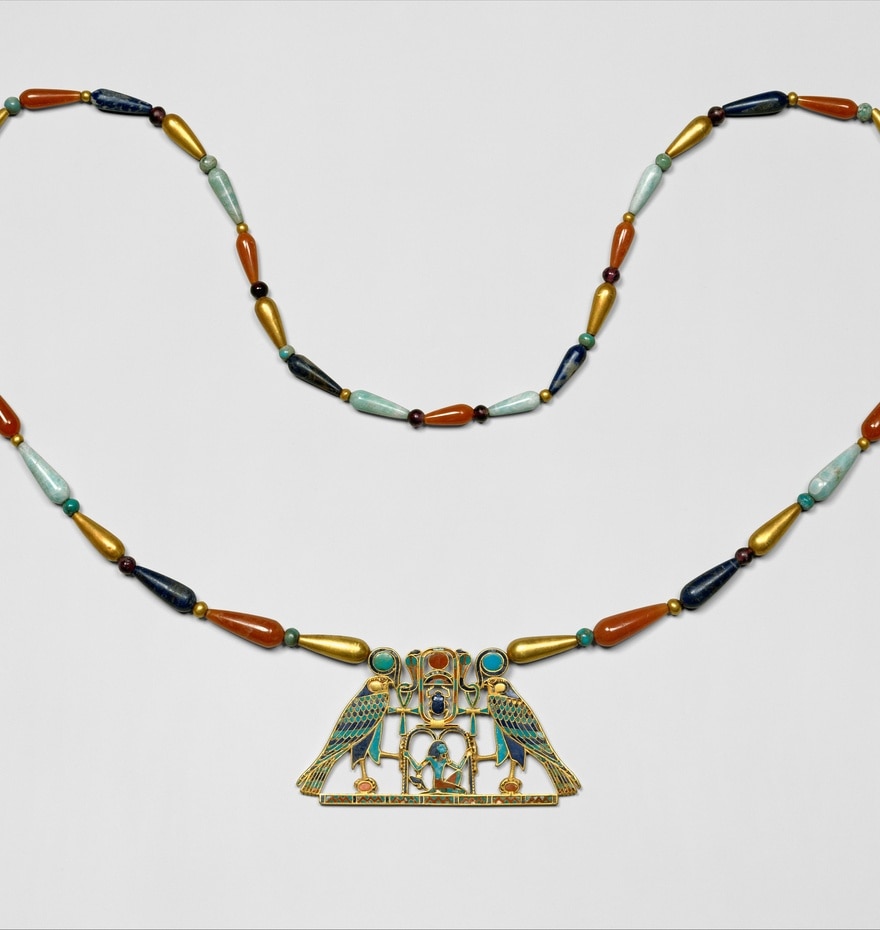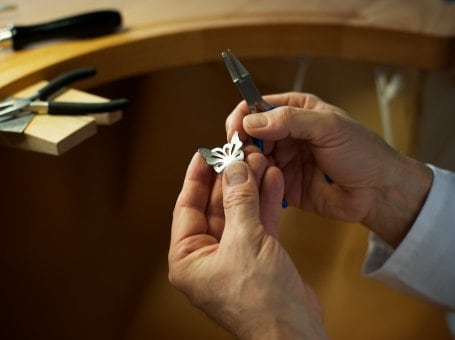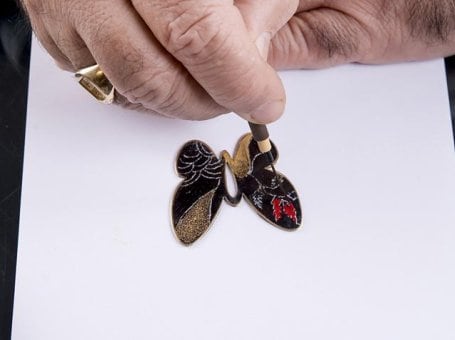Well before Pliny the Elder (first century C.E.) established his list of fine and precious stones in his Natural History, the civilizations of Mesopotamia, followed by that of ancient Egypt, were already using lapis lazuli in ornaments and amulets. Ribbon agate, rock crystal, and carnelian, as well as turquoise—a stone whose (re)discovery is a fascinating journey in itself—were also widely used in Antiquity.
With the Middle Ages and its taste for color came the renaissance of the glyptic art. The reuse of ornamental stones grew more widespread as their nuanced hues were used to bring color to cameos, intaglios, and even religious images and talismans.
Offering a wealth of possibilities, hardstones were used to ornament pieces of furniture, such as these center tables with their elaborate marquetry tops. The extreme refinement characteristic of early seventeenth-century Italian art was embraced by French craftsmen before gaining popularity throughout Europe in the nineteenth century, when balls and other receptions were fashionable.
The major conquests—whether societal or spatial—of the seventies also had somewhat of an impact on the traditional jewelry world, reviving interest in ornamental stones like malachite that had been neglected since the Art Deco period.
Join us on April 12 or 13 to delve into the mysteries of these precious stones.
With Marie-Laure Cassius Duranton, Gemologist, Art Historian and Teacher-Researcher at L'ÉCOLE, School of Jewelry Arts & Paul Paradis, Art historian, Decorative Arts and Jewelry Specialist, Teacher at L’ÉCOLE, School of Jewelry Arts
Session for audience in Europe/USA:
Wednesday, April 12th at 7:00 pm (Paris time),
in French
Thursday, April 13th at 1:00 pm (Paris time),
in English
Session for audience in Asia Pacific:
Thursday, April 13th at 7:00 pm (Paris time),
in French with simultaneous translation in English, Cantonese, Mandarin and Japanese
Photo: Necklace of Sithathoryunet, Amethyst, carnelian, lapis lazuli, green feldspar, yellow gold, Middle Empire, circa 1887-1878 B.C., Metropolitan Museum of Art, New York




